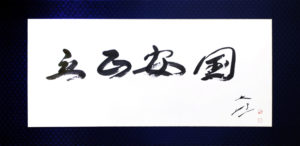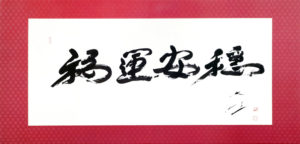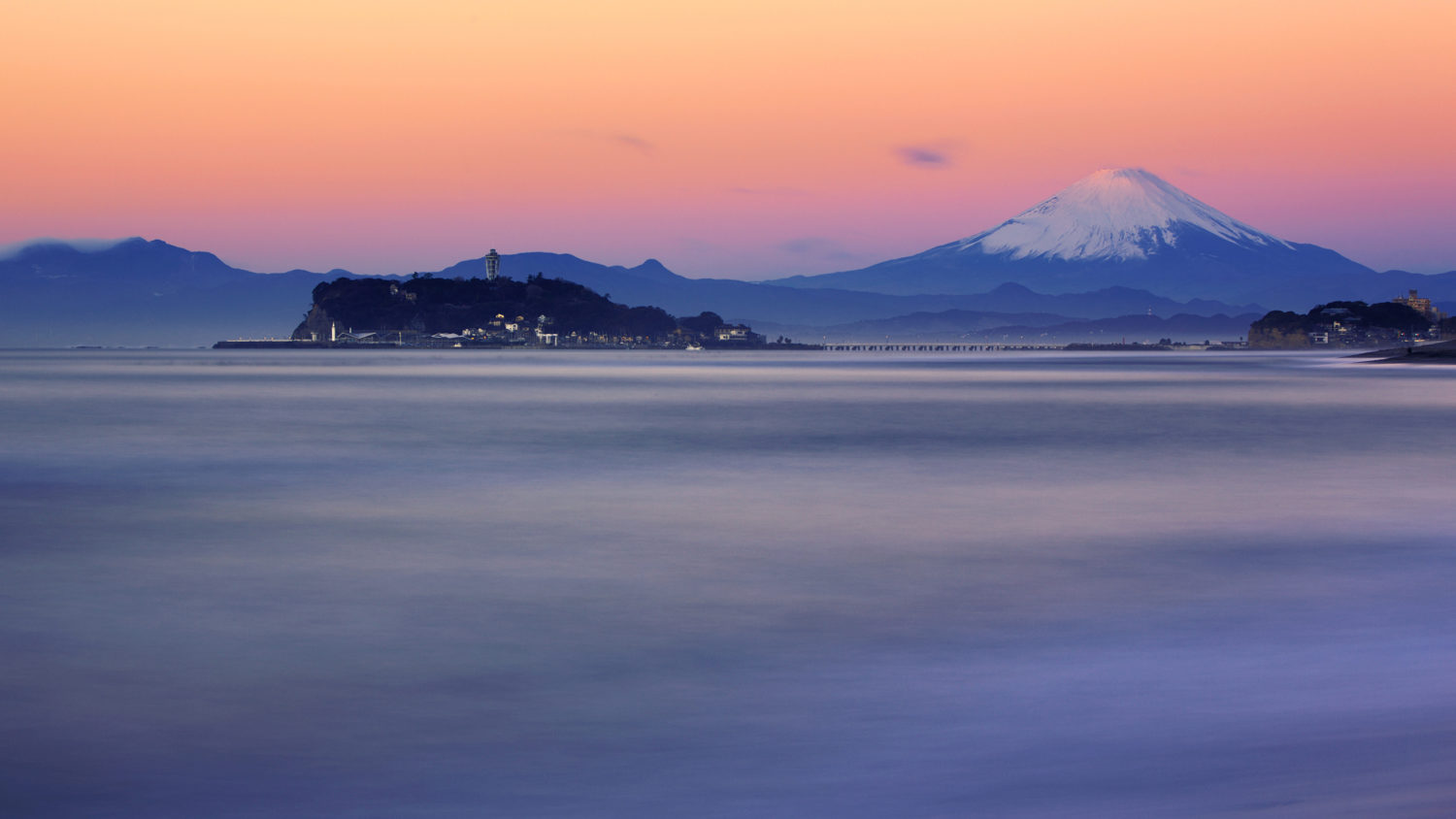SGI President Ikeda sent the following message to the 41st Soka Gakkai Headquarters Leaders Meeting of the New Era of Worldwide Kosen-rufu, held on May 3, 2019, at the Toda Memorial Auditorium in Sugamo, Tokyo. The gathering commemorated Soka Gakkai Day, Soka Gakkai Mothers Day and Soka Gakkai Successors Day. The message was originally published in the May 4, 2019, issue of the Seikyo Shimbun, the Soka Gakkai’s daily newspaper.
Congratulations on today’s headquarters leaders meeting held under bright blue skies, celebrating the inspiring triumph of ordinary people!
Nichiren Daishonin, the Buddha of the Latter Day of the Law, is surely aware of all the incredible efforts being made by the dedicated members of our Soka family.
He writes, “Though one’s trustworthiness may at first go unnoticed, in time it will be openly rewarded” (“Four Virtues and Four Debts of Gratitude,” The Writings of Nichiren Daishonin, vol. 2, p. 636). There can be no doubt that your unseen virtues will become visible rewards, shining with ever-greater brilliance.
The Toda Memorial Auditorium located here in Sugamo—the place where first Soka Gakkai President Tsunesaburo Makiguchi died in prison for his beliefs during World War II—opened in 1979. At the time, devilish forces were attacking us left and right, intent on disrupting and destroying the Soka Gakkai, an organization committed to carrying out the Buddha’s intent.
At the headquarters leaders meeting held here in November 1979, I led members in a Soka Gakkai song—“The Song of Indomitable Dignity”—for the first time since stepping down as president (in April 1979).[1] Everyone sang in perfect unison, and our lives merged as one. Our counteroffensive began then and there, from this hall, with this lion’s roar of mentor and disciples.
In the 40 years since then, we have triumphed over every obstacle with indomitable courage and dignity. Who would ever have imagined that the Soka Gakkai would grow, as it has today, into a global religious movement? Let’s all celebrate the “Justice” and “Shared Struggle” of Soka together!
The many young Bodhisattvas of the Earth who, through wondrous timing, were born around 1979 and ensuing years, are now striving energetically as youth division members on the front lines of kosen-rufu and society. I have the greatest faith in them and wish to thank them for their devoted efforts.


Two calligraphic works by SGI
President Ikeda were unveiled at the May 3 Soka
Gakkai Headquarters Leaders Meeting. They read:
“Establishing the correct teaching for the peace of
the land” (top) and “Good fortune and security.”
Although President Ikeda had penned these works in
June 1982 while in Hokkaido, Japan, this was the first
time in 37 years that he introduced them.
May 3, Soka Gakkai Day, is the New Year’s Day of the Soka Gakkai. It is a day when we return to our vow from time without beginning and make a fresh commitment to work for kosen-rufu, our hearts blazing like the newborn sun.
To commemorate this special day, I would like to present you with a pair of my works of calligraphy. One reads, “Establishing the correct teaching for the peace of the land,” and the other, “Good fortune and security.” I inscribed these in June 1982 in Hokkaido.
In “On Establishing the Correct Teaching for the Peace of the Land,” a core treatise of Nichiren Buddhism, the Daishonin writes, “If you care anything about your personal security, you should first of all pray for order and tranquillity throughout the four quarters of the land, should you not?” (WND-1, 24). [See p. 8 for study article.]
Taking these words to heart, we have steadfastly forged ahead on the great path of realizing Nichiren’s ideal of “establishing the correct teaching for the peace of the land,” based on individual human revolution. That is also the path to attaining limitless “good fortune and security.”
As the direct disciple and successor of my mentor, second Soka Gakkai President Josei Toda, I became the third Soka Gakkai president in 1960. That year coincided with the 700th anniversary of Nichiren submitting this treatise to remonstrate with the nation’s rulers in 1260. As you may all know, from that year of my inauguration, I set in motion a great groundswell of dialogue to spread the humanistic principles of Nichiren Buddhism in order to create a world of lasting peace and security for all. I traveled to Okinawa and other regions throughout Japan, and then set off for the United States and other parts of the Americas and the world.
Through their arduous, painstaking efforts, our members are constructing a network dedicated to realizing the ideal of “establishing the correct teaching for the peace of the land” based on the supreme philosophy of respect for the dignity of life. This network is now revitalizing communities everywhere and turning them into beautiful realms of human harmony.
We are building a vast, ever-growing alliance of “friends in the orchid room” (see “On Establishing the Correct Teaching,” WND-1, 23), transcending national, religious and cultural differences to unite people around the world in the effort to actualize the abolition of nuclear weapons—a goal my mentor fervently called for—to create a culture of peace, to promote sustainable development and to foster global citizens.
Nichiren warns, “When one comes to the end of one’s good fortune, no strategy whatsoever avails” (“The Strategy of the Lotus Sutra,” WND-1, 1000). Good fortune is incredibly important.
It is certainly true that our endeavor to establish a peaceful society through spreading the life-affirming philosophy of Nichiren Buddhism entails indescribable hard work and never-ending challenges. But that is precisely why we are able to accumulate “treasures of the heart” along the way. And the good fortune we gain is not ours alone; it is shared by our families, friends and loved ones, all those we are somehow connected to, and also the lands in which we live. Nor is this good fortune limited to our present lifetime; it enables us to attain a vast life state pervaded by peace and security, indestructible and enduring for all eternity, for both ourselves and others, and for both our life and our environment. Engaging in Soka Gakkai activities is the way to advance in rhythm with the Mystic Law toward life’s supreme truth and happiness.
During the Osaka Campaign (in 1956), in which we achieved a victory that everyone thought was impossible,[2] the members in Kansai and I engraved in our hearts these words of the Daishonin: “I am praying that, no matter how troubled the times may become, the Lotus Sutra and the ten demon daughters will protect all of you, praying as earnestly as though to produce fire from damp wood, or to obtain water from parched ground” (“Rebuking Slander of the Law,” WND-1, 444).
Making this spirit of Nichiren our own, let’s continue to chant Nam-myoho-renge-kyo for the protection of our members and do everything we can to support and assist them in times of disaster and adversity. Through the great power of faith and practice, let’s summon forth the boundless power of the Buddha and the Law, and resolutely achieve goals that may seem impossible.
Next year will be the 90th anniversary of the Soka Gakkai’s founding. It will also mark 760 years since the Daishonin submitted his treatise “On Establishing the Correct Teaching for the Peace of the Land” to the authorities.
Let’s each continue to challenge ourselves fearlessly with the heart of a lion king! Cheerfully uniting with our women’s division members—the suns of Soka and the mothers of kosen-rufu—let’s achieve lives filled with “good fortune and security” gained through our efforts to realize Nichiren’s ideal of “establishing the correct teaching for the peace of the land.”
I am delighted that future division members are attending today’s meeting, which also celebrates Soka Gakkai Successors Day (May 5). Thank you!
Nichiren writes:
A bird’s egg contains nothing but liquid, yet by itself this develops into a beak, two eyes, and all the other parts, and the bird soars into the sky. We, too, are the eggs of ignorance, which are pitiful things, but when nurtured by the chanting of Nam-myoho-renge-kyo, which is like the warmth of the mother bird, we develop the beak of the thirty-two features and the feathers of the eighty characteristics [of the Buddha] and are free to soar into the sky of the true aspect of all phenomena and the reality of all things. (“Letter to Niike,” WND-1, 1030)
Nurtured by the sound of Nam-myoho-renge-kyo—we can demonstrate the unsurpassed power of the Buddha and soar freely into the sky of our mission and success in life.
My young friends of the future division, each of you without exception, possesses potential as vast and infinite as the universe itself. Your practice of Nichiren Buddhism is the most exceptional and powerful key for unlocking and tapping that potential in your life.
Indeed, all of us of the Soka family, let’s resolve together today to activate the limitless hope and courage in our lives, and boldly begin a new flight toward fresh, ever-victorious development.
References
- On April 24, 1979, Daisaku Ikeda stepped down as third Soka Gakkai president to shield the members from the perverse machinations of the Nichiren Shoshu priesthood, which had colluded with corrupt former Soka Gakkai leaders to wrest control of the lay organization. While President Ikeda’s activities in Japan continued to be curtailed by the priesthood, he turned his focus to opening the path of worldwide kosen-rufu. As president of the SGI, he did his utmost to encourage members with his activities overseas, including those in the United States. True liberation came on Nov. 28, 1991, when the Soka Gakkai and SGI formally disassociated from ↩︎
- Osaka Campaign: In May 1956, the Kansai members, uniting around the young Daisaku Ikeda, who had been dispatched by second Soka Gakkai President Josei Toda to support them, introduced 11,111 households to the practice of Nichiren Buddhism. In elections held two months later, the Soka Gakkai–backed candidate in Kansai won a seat in the Upper House, an accomplishment that was thought all but impossible at the time. ↩︎
You are reading {{ meterCount }} of {{ meterMax }} free premium articles

